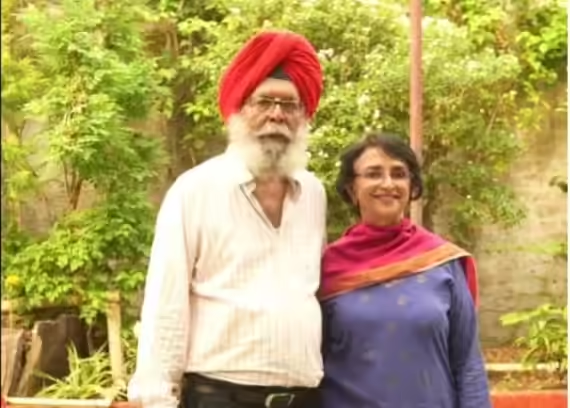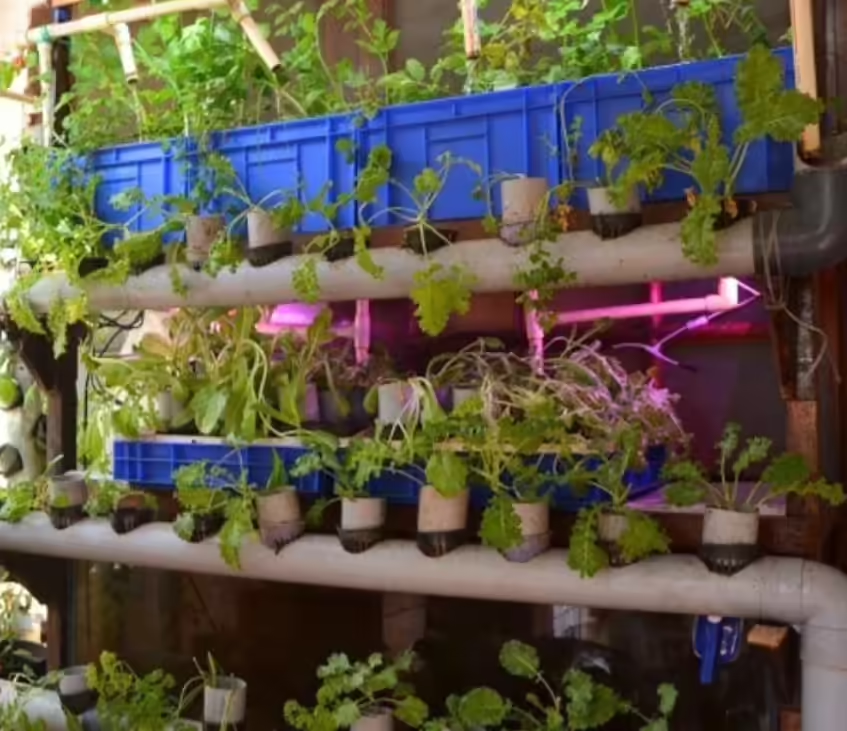In Delhi’s polluted landscape, Peter and Neeno’s home boasts an exceptional AQI of 10-15, achieved through sustainable construction, 15,000 plants, solar power, and water conservation. Their journey, inspired by Neeno’s health, transformed their residence into a green sanctuary, demonstrating resilience and environmental responsibility. Diwali just got over, and Delhi is grappling with alarming pollution levels. While Delhi’s Air Quality Index (AQI) often spikes dangerously, it is very surprising to know that there is a couple’s home in the heart of the city with an AQI of 10- 15.
Peter Singh and Neeno Kaur have 10-15 AQI
Green home built with sustainable materials
Peter and Neeno’s home rejects conventional construction materials like cement and paint, opting instead for eco-friendly, traditional options. Bricks are bound with lime mortar, and the surfaces are finished using lime paint, which is natural and breathable. According to a Business Standard article, the roof is covered with stone tiles, which helps regulate indoor temperatures, naturally cooling the home during hot Delhi summers. These building choices reduce energy consumption and create a healthier living environment while honoring ancient sustainable practices.
Delhi Smog Worsens Two Days After Diwali, AQI Hits Very Poor Levels
15,000 plants purify the air indoors and outdoors and keep the AQI balanced
The most commendable feature about their unique home is that their house has a 15,000-plant collection, integrated through rooftop gardens, hanging pots, and green walls. A post by Better India also says that these plants actively purify the air, removing harmful pollutants and maintaining indoor AQI levels below 15, which is truly extraordinary for Delhi’s smog-filled atmosphere. The green coverage also provides shade, improves humidity, and creates a calm, natural environment, making their home a rare urban oasis where one can breathe clean air freely.
It is solar-powered and has water conservation facilities
Completely off-grid, the house runs entirely on solar power, eliminating reliance on polluted urban electricity grids. Water use is equally sustainable, with a 15,000-liter rainwater harvesting system supporting irrigation and household needs. Additionally, the couple recycles all water within the home, minimising waste. This approach to resource management aligns perfectly with their green living philosophy and reduces their environmental footprint significantly.
Peter Singh and Neeno Kaur have 10-15 AQI, they grow veggies at home
Growing food and turning stubble into fertiliser
Healthy living extends beyond air and water; Peter and Neeno grow their own organic vegetables year-round in gardens and greenhouses. They reduce waste by mixing agricultural stubble with organic compost to create nutrient-rich fertiliser. This fertiliser nourishes the mushrooms they cultivate inside their home, turning an environmental pollution problem into a productive resource.
A healing journey inspiring sustainable living
The couple’s journey began with Neeno’s battle against blood cancer, which led them to embrace an organic lifestyle focused on natural healing. Guided by Ayurvedic advice, they chose to transform their home into a sustainable sanctuary upon returning from Goa. Today, their residence is not just a home but a shining example of resilience and responsibility. In a city struggling with pollution, their green oasis stands as a hope for healthier urban living and environmental stewardship.
Other couples in India with sustainable homes
– Jaipur-based architects Abhimanyu Singh and Shilpi Dua have innovated eco-friendly homes with Hexpressions. Their houses use lightweight, strong honeycomb panels made from recycled paper, making them fireproof, water-resistant, and soundproof. The panels are easy to transport and assemble, reducing construction time and costs significantly.- Sanjay and Pratibha Singh’s Bangalore home exemplifies eco-friendly living with natural materials like earth and lime that keep it cool without air conditioning. Powered by solar energy, it recycles greywater for gardening. Their focus on organic gardening, vermicomposting, indoor plants, natural ventilation, and zero waste creates a tranquil, sustainable urban oasis.Photos: gingxrty via Reddit
Images are for reference only.Images and contents gathered automatic from google or 3rd party sources.All rights on the images and contents are with their legal original owners.
